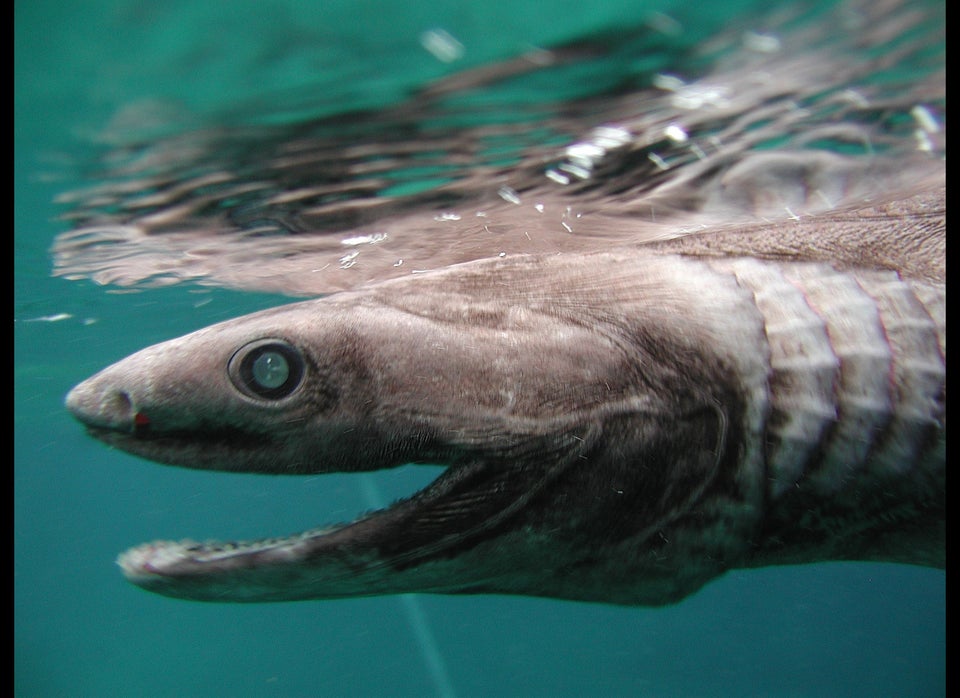
Thousands of blacktip and spinner sharks will swim into South Florida in the next few weeks in an annual migration that yields spectacular aerial videos and occasional beach closures.
Up to 15,000 have been counted on a single day off Palm Beach County by scientists from Florida Atlantic University, and these just represent the ones visible from one flight along the coast. Like birds and manatees, the sharks come south for the winter, arriving in December and January, with numbers peaking in late January and early February.
"When they're there, you can walk on them," said Josh Jorgensen, of Singer Island, director of the Blacktip Challenge, a five-day catch-and-release tournament along Florida's east coast that tags sharks for scientists. "I remember one time last year there must have been 500 that swam by in an hour, endless blacktips. They were 20 or 30 feet off the beach."
The sharks swim as far south as southern Broward or northern Miami-Dade County, said Stephen Kajiura, associate professor of biology at FAU, who has studied the migration. They head north in March, reaching as far as North Carolina.
Scientists say the danger to people is low, despite scary aerial videos that show vast swarms of sharks within yards of clueless swimmers. Blacktips and spinners, which typically reach lengths of five or six feet, eat mullet, grouper, snook and other fish, nothing as large as a human being.
"Those sharks are 100 or 200 yards away from thousands of bathers and they show no interest in them at all," said Brent Winner, research scientist for the Florida Fish and Wildlife Conservation Commission.
The "big three" species for shark attacks are the great white, tiger and bull shark, which have accounted for an estimated 464 attacks worldwide, with 129 fatalities, according to the International Shark Attack File, based at the Florida Museum of Natural History. The organization cautions against placing too much weight on exact numbers, however, saying it's often difficult for victims or witnesses to observe enough detail to establish the species.
Blacktips and spinners account for 44 known bites with no fatalities, but scientists say these represent cases of mistaken identity, in which a shark in murky water mistakes a hand or foot for a fish.
Many scientists say such encounters should not be given the inflammatory label "shark attack." And scientists and conservationists note that people kill tens of millions of sharks a year for their meat and fins. Last year seven people were killed by sharks worldwide.
Still, on days when thousands of sharks come close to swimmers, Kajiura said it makes sense to eliminate even the slight risk of an encounter.
"I think it's probably prudent to close the beaches when they see the sharks close to shore like that," he said. "The probability of a bite is low, but South Florida is such a tourism-driven economy that you can't afford to have any kind of publicity like that."
George Burgess, director of the International Shark Attack File, is studying whether there's a relationship between the migration and shark bites on the east coast of Florida. Although the raw data suggests there may be a correlation, he said there are several significant variables that need to be considered, such as how many people are swimming at different times of the year and the water temperatures in a given year.
The reasons for the annual migration are unclear. Kajiura said the sharks appear to leave the north when the water temperature falls below 71 degrees or so. And they appear to be following mullet and other prey as they migrate, although he said he doubts that's the only reason for their movements.
Water temperature appears to be a key factor. Last year, when a warm winter led to the arrival of fewer manatees in South Florida, far fewer sharks showed up as well. The maximum daily count was around 6,000, half the number from the previous year, said Shari Tellman, a research assistant at FAU who works with Kajiura.
Tellman said the arrival of the sharks should be celebrated as the persistence of an ancient natural cycle that maintains the health of the ocean.
"They are extremely important in keeping the economically important fish species' populations healthy by weeding out the sick and weak," she said in an email. "Without a healthy population of apex predators, the entire food chain is affected down to the reefs and sea grasses. So it's GOOD NEWS to see lots of sharks migrating each year!"
dfleshler@tribune.com, 954-356-4535 ___
(c)2013 the Sun Sentinel (Fort Lauderdale, Fla.)
Visit the Sun Sentinel (Fort Lauderdale, Fla.) at www.sun-sentinel.com
Distributed by MCT Information Services
